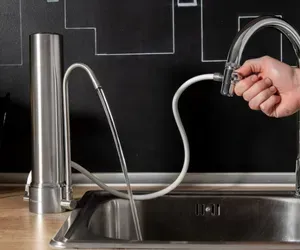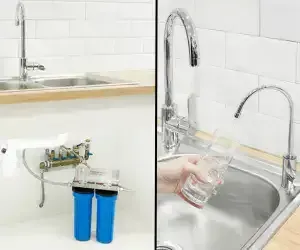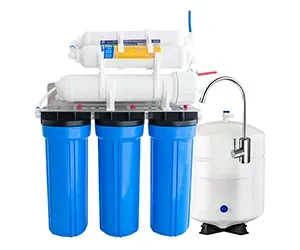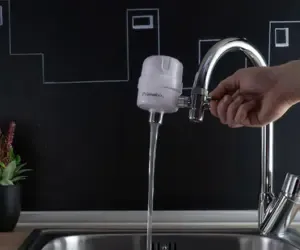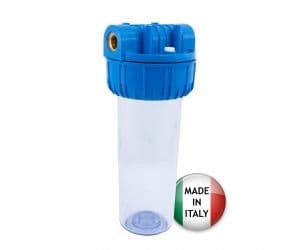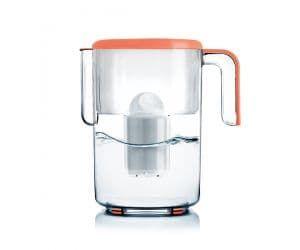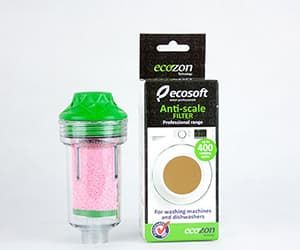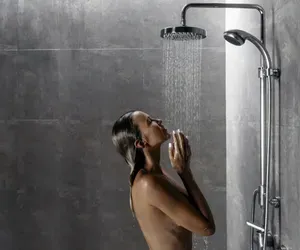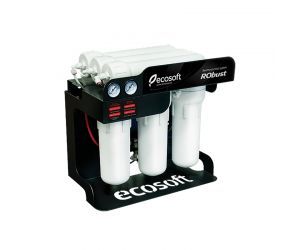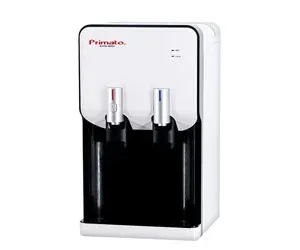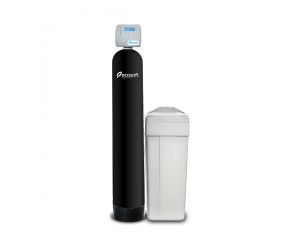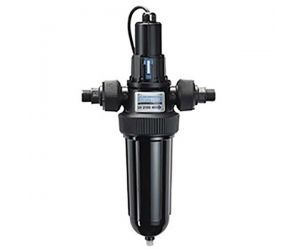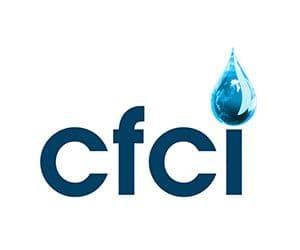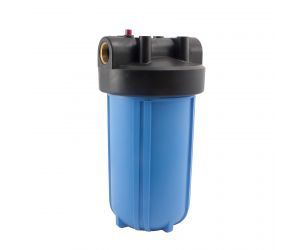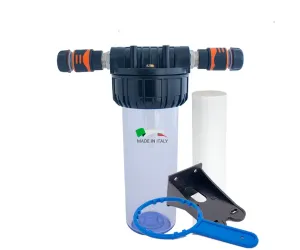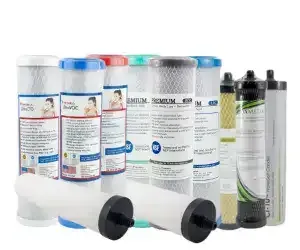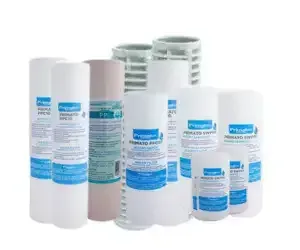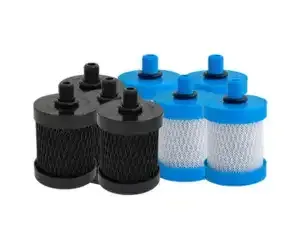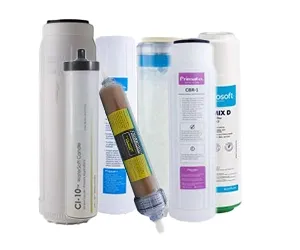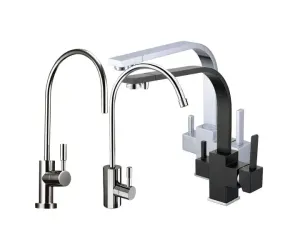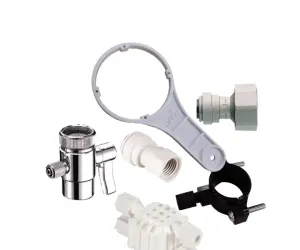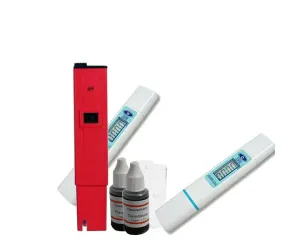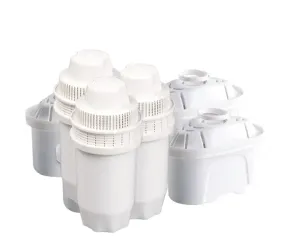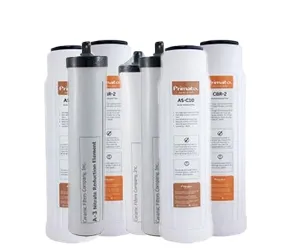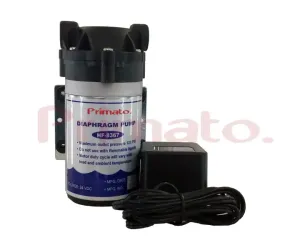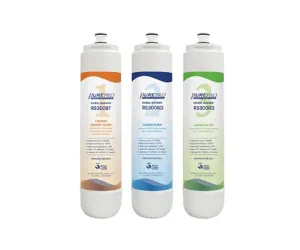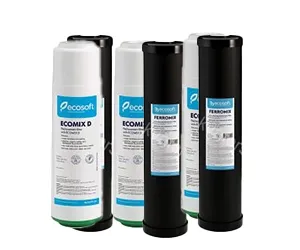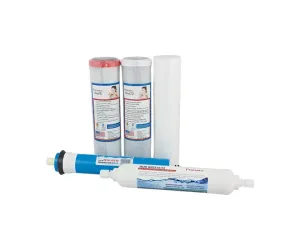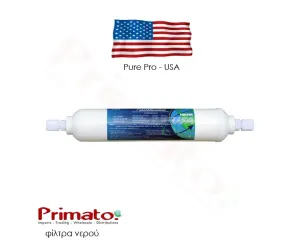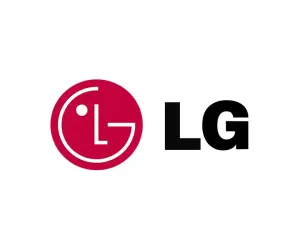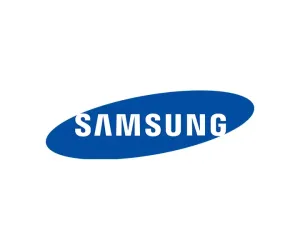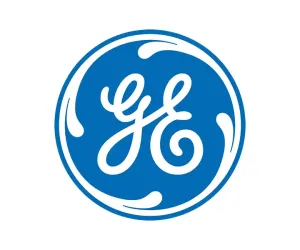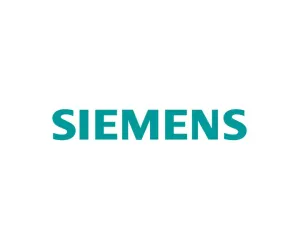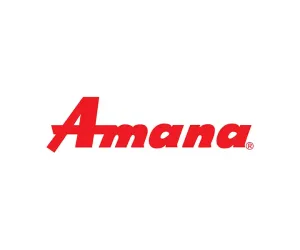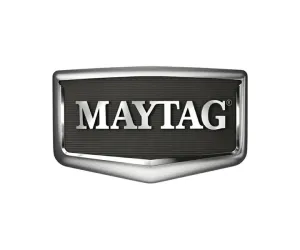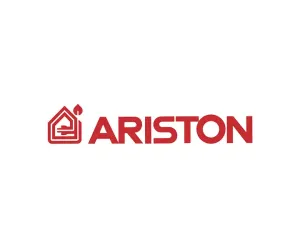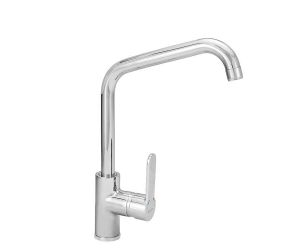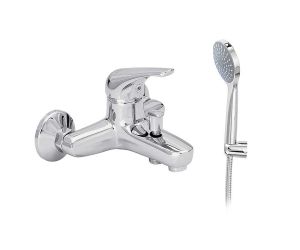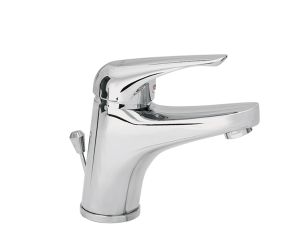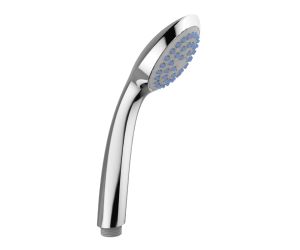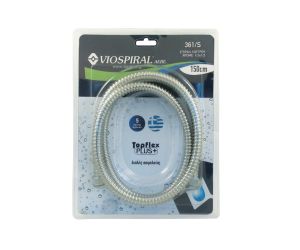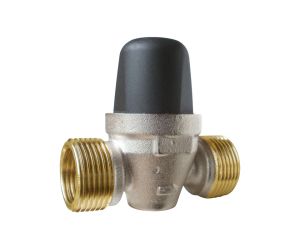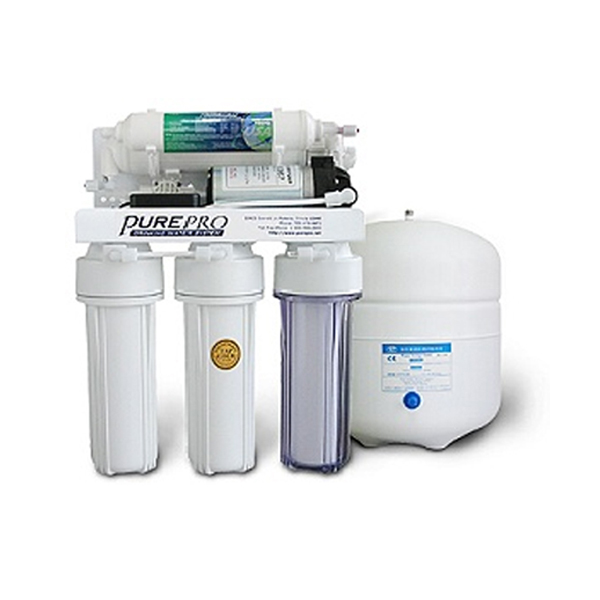Reverse Osmosis - What is it and how it works
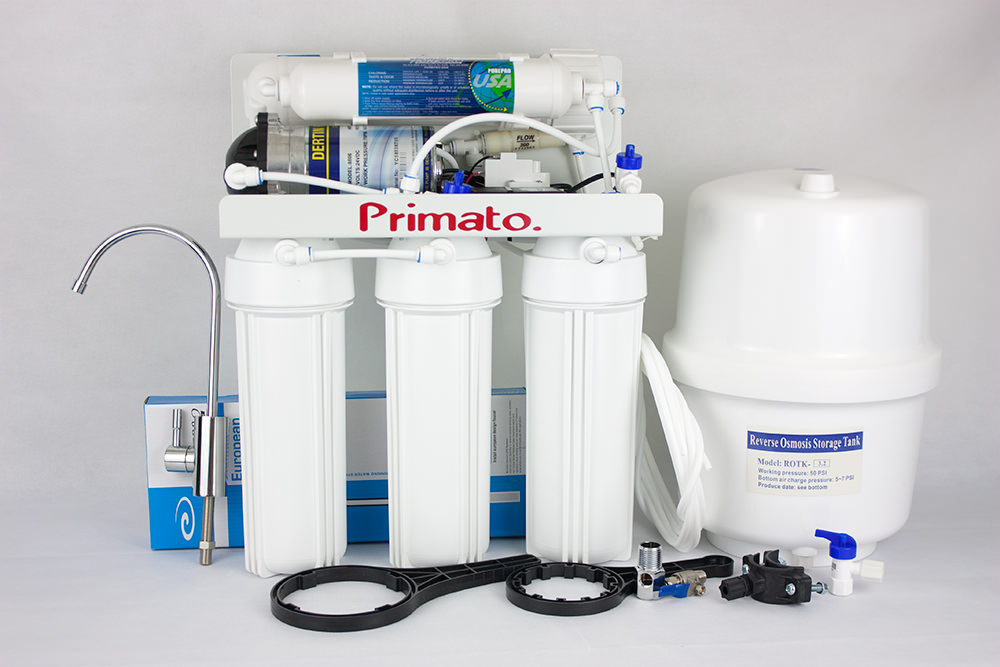
Before I explain what Reverse Osmosis is (RO for short), I should probably explain what osmosis is. Put simply, osmosis is when solvent molecules (eg water) pass through a semi-permeable membrane to a solution or from a thinner solution to a denser solution. Semi permeable membrane (or RO membrane) allows solvent molecules to pass through (and nothing else).
By the way, osmosis comes from the ancient greek word ὠθῶ, which translates to "push".
To better explain osmosis, let's use this picture where you can see 2 solutions seperated by a semi permeable membrane.
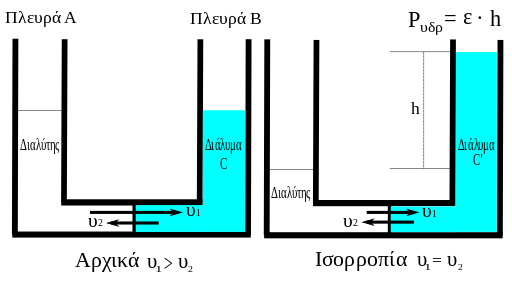 Let's assume that the solution (in blue color) is sugar and has a concentration C (keep in mind that sugar is dissolved in water). On the left side A ( greek: Πλευρά Α) we have pure solvent (water) with a concentration C=0. Since this membrane allows only solvent molecules to pass through, only pure water will pass through the membrane (from the left side to the right side - pure water will pass from the left side to the sugar side). Also, any pure water molecules present in the sugar will pass from the right side to the left side. So far so good? Now, since pure water can pass through both sides, eventually these concentrations will be equal. This is called Osmosis.
Let's assume that the solution (in blue color) is sugar and has a concentration C (keep in mind that sugar is dissolved in water). On the left side A ( greek: Πλευρά Α) we have pure solvent (water) with a concentration C=0. Since this membrane allows only solvent molecules to pass through, only pure water will pass through the membrane (from the left side to the right side - pure water will pass from the left side to the sugar side). Also, any pure water molecules present in the sugar will pass from the right side to the left side. So far so good? Now, since pure water can pass through both sides, eventually these concentrations will be equal. This is called Osmosis.
Now let's try to explain Reverse Osmosis. If we apply pressure to the right side (the sugar - blue color) then only the pure water in the sugar will pass to the left side. So we have one way movement, from right to left, from the sugar to the left side. This is called reverse osmosis.
In RO water treatment systems, dirty water is trying to pass from the right side to the left side. Since only pure water molecules can pass through the membrane, dirty water will be discarded and pure water will pass through to the left side (your glass or the RO tank) so that you can drink it! Got it?
Until now, RO is the best technology has to offer in water treatment and desalination. Many islands in the world use RO technology to get pure water from the sea.
Have a look at the picture below (sorry for the greek...). This is how desalination works: sea water is on the right side. We apply pressure to the sea water which is then forced to pass through the membrane to the left side. The "dirty" water in this situation in this case may be used to extract salt or left in the sea (it is sea water after all...).
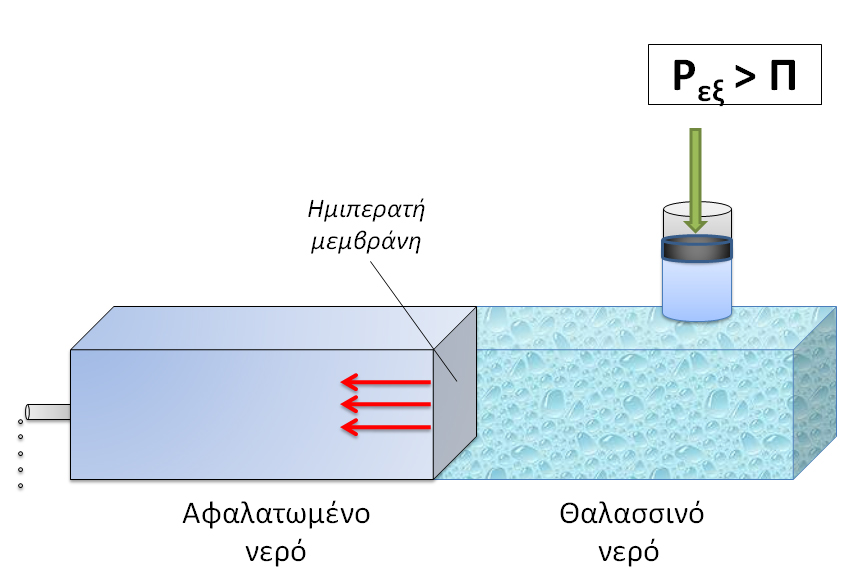
Saudi Arabia has the biggest desalination plant in the world using reverse osmosis water treatment. 50% of the country's drinking water is produced this way. Santa Barbara (USA) has a working RO plant since 1992, capable of producing 30400 m3 drinking water per day. Of course in a smaller scale, there are the domestic RO water filters (which you can find in our website) capable of producing extremely pure water for your family's needs.
Domestic reverse osmosis filters usually consist of 5 stages. In the first stage (transparent housing on the right), there is a polypropylene filter that reduces sediment and rust. Its main job is to protect the next stages from clogging. In the second stage there is a 5μm carbon block that reduces chemicals and harmful substances. In the third stage there is a 0.5μm carbon block that reduces an even wider list of chemicals and heavy metals. These carbon blocks protect the membrane from the chemicals (chemicals destroy the membrane).
After passing through the first 3 staes of filtration, water is then forced to pass through the RO membrane. Dirty water is discarded and pure water is stored in the tank. When you switch your tap on, water passes from the tank through the 5th stage to your glass. 5th stage is usually an activated carbon filter made from coconut shell. It is used to "refine" your water's taste and odor, since RO water is completely tasteless.
You can add a mineral filter as a 6th stage that enhances the water with minerals or even a UV light. Keep in mind that this is the correct RO set up:
1st stage: Polypropylene filter
2nd stage: 5μm carbon block
3rd stage: 0.5 carbon block that can reduce heavy metals
4th stage: RO membrane
5th stage: Activated carbon filter from coconut shell
Some times we see wrong set ups. A wrong set up can be:
1st stage: Polypropylene filter
2nd stage: carbon block or granural activated carbon
3rd stage: Polypropylene filter
This is wrong!! RO membrane doesn't have a problem with sediment, since "dirty water" will be discarded. It has a problem with chemicals. Chemicals can destroy the membrane and that's the reason the correct set up needs to have 2 carbon blocks as pre filters. If you have a correct set up then you will be replacing your ro membrane every 2 years (and not sooner). If your pre filters are of good quality then you should replace them once every year (and not sooner)
If we haven't covered your RO questions, please don't hesitate to contact us. We'll be very happy to help you! Check out our available water filter systems for sale here
Recent posts
- The Future of Water: How Primato Filters are Pioneering New Standards in Water Safety
- Primato's Journey at Aquatech Amsterdam: Building Bridges and Expanding Horizons
- The Journey of Water: From Source to Tap - Understanding the Filtration Process
- What are three way water filter taps?
- Shower water filters
- Commercial water filters for hotels, restaurants and cafes
- The reason why more and more people prefer undercounter water filters
- Zeolites in water treatment
- The water supply network of Athens
- The whole truth about water filters
- Russian water filters with aragonite - Purchase guide
- Choosing and buying a countertop water filter
- I live in Athens. Do I need a water filter?
- Water Filter Prices: Full Guide
- Does filtered water help with allergies?
- 10+ reasons to add more water to your lifestyle!
- Zeolite: A natural mineral in the service of water filtration
- Thessaloniki Water: From the source to the glass
- Meet the Greek Water Filters Manufactured in Thessaloniki
- Water Filters with Zeolites
- Turning a coconut into activated carbon
- Thessaloniki: Which Are The Best Water Filters?
- Tap water in Greece: Is it safe? The problems and the solutions
- How to Choose the Right Replacement Filter
- Ultra filtration and Hollow Fiber Membranes explained
- How hard is water in Thessaloniki?
- Whole house water filter cartridges - How to choose the right one!
- Countertop water filters - What to look for before I buy
- Do I need a water filter if I live in Athens?
- Everything you need to know about tap water filters
- Under-sink water filters - Everything you need to know
- Reverse Osmosis - What is it and how it works
- World Water Day - 22 March
- Primato goes sailing!
- What are water filters?
- Reverse Osmosis - Perfect for islands, drilling water and aquariums
- What is the activated carbon found in our water filters?
- Arsenic in the Water - The ubiquitous venom
- Hexavalent Chromium - A Carcinogen That Should Be Reduced Immediately!
- Paranoia of alkaline water - Understanding PH
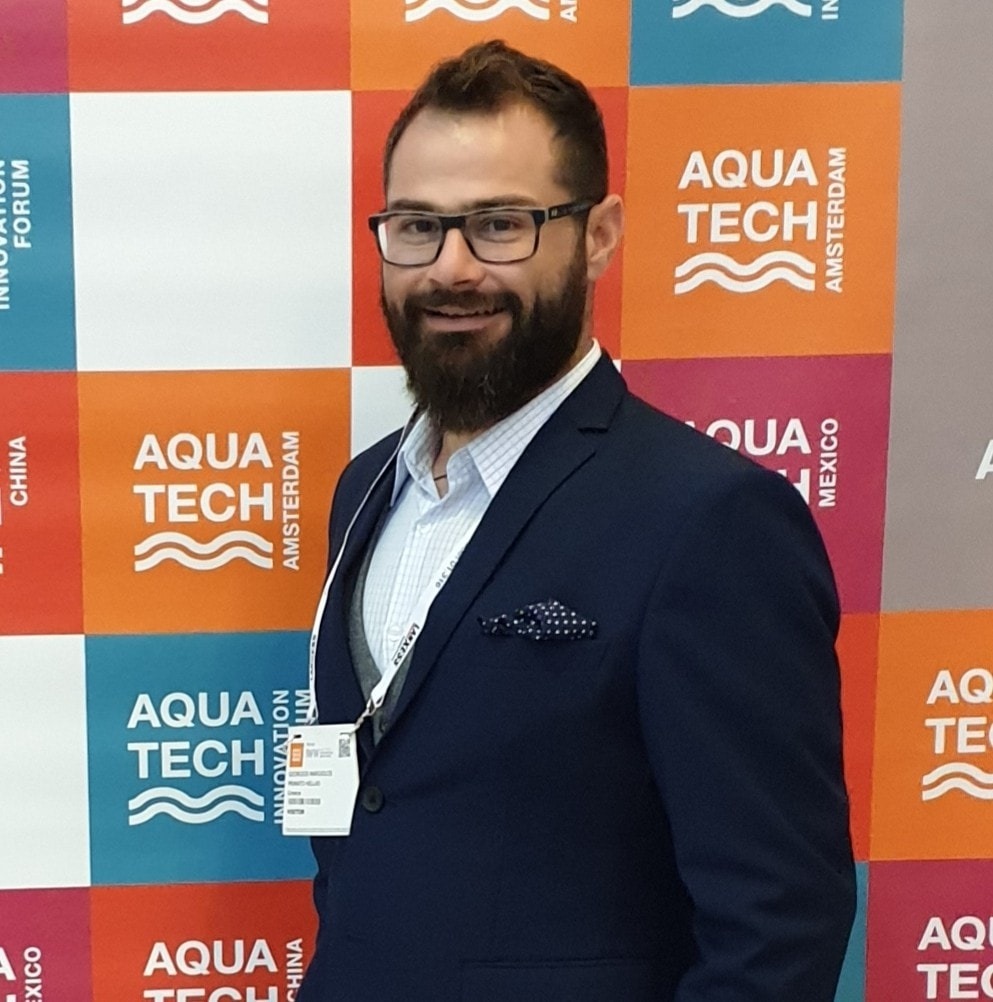
George Margiolos
George Margiolos was born in Thessaloniki and has graduated from the Department of Marketing of the Alexandreio Technological Educational Institute of Thessaloniki. He is fluent in English and (not so fluent) in German.
Ηe has been Project Manager at Avery Dennison - Fastener Division in the UK. There, his main project was to redesign the company's products into new applications so as to become more environmentally friendly. In combination with the fact that in the UK people are more familiar with water filters, he has developed a love for environmentally friendly water filters, which reduce the use of plastic bottles and improving people's quality of life.
Since 2008, he has published over 300 unique educational and informative articles on water filters and new water treatment technologies.
Occasionally, universities and doctoral students request to use George Margiolos' articles in their research because of their quality and uniqueness.
